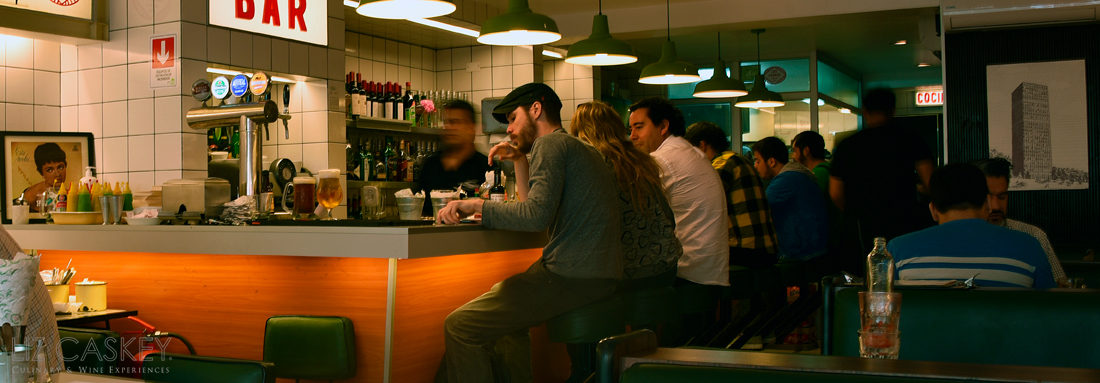
As we head into winter in South America, up north, the Mercury is rising. Everybody is heading for the beach, the pool, somebody’s backyard barbecue. Rosé wines have long been associated with beating the summer heat. In fact, they also pair perfectly with many summertime foods: a juicy heirloom tomato salad with goat cheese and shredded basil; cantaloupe wrapped in prosciutto; grilled ahi tuna skewers; fingerling potato salads; crabcakes and corn on the cob; watermelon gazpacho; a lobster roll sandwich; the list is endless. And yes, they also are great on their own.
After many years, rosé has thankfully stopped being associated in the US only with White Zinfandel, that sugary jug wine that tainted so many Americans palates into believing that rosé is sweet. Well, as we all know now, the real rosé is dry, zingy, and full of lean fresh fruits like strawberries, raspberries, and cherries.
Although French rosé from Provence leads the world in production at 28% of the total volume, South America is now pumping out some excellent rosé in the cheery price range of US$10/bottle. In Argentina, virtually all rosé is made from Malbec, giving a meaty, lush, and fruit-laden drink. In Chile, the tendency has been to leverage Cabernet from the Colchagua or Maipo valleys. However, wineries are experimenting with new varietals like Merlot, Malbec, Syrah, and even blending with Petit Verdot for a more balanced drink full of youth and a touch of spice.
So how does rosé get to be, well, pink? In a nutshell, rosé is made from red grapes. Once harvested, they are gently crushed and transported to tanks overnight, called Vin d’une Nuit, literally “wine from one night”. This cold maceration process leaves the skins in contact briefly with the must to extract color, flavors, and aroma. Basically, they are “marinating” the wine. They run off the clear juice, discard the skins and seeds, and then proceed to make the wine like a white varietal with no oak. Pretty simple—as far as winemaking goes.
Rosés are meant to be drunk chilled and young. Don’t try aging these. Just enjoy them like the summer—because they will be gone before you know it.
Melipal Rosé 2008 (ARG) US$10
A newcomer gaining ground very quickly in Argentina’s wine scene, Melipal is a winery to watch. Exclusively producing Malbec, they show versatility and depth within this grape. The rosé is a favorite from Argentina. The color is a shiny salmon hue that glows like a jewel in your glass. The bouquet is a rich scent of raspberries, strawberries, and even a slight sweetness of watermelon. I like the mouth feel of this wine. It’s subtle, dry, has a little grip, and even could be characterized as seductive. In April, I lunched at Melipal and they paired this with a shot of semi-frozen watermelon-tomato gazpacho that worked beautifully.
Dominio del Plata, Crios Rosé 2008 (ARG) US$11
Female winemaker Susana Balbo’s pet project is Crios, a value-driven brand that is really all about making wines of high quality and personality accessible to a wide variety of consumers. Her rosé is no exception. Chock full of fruit on the nose like strawberries and cherries, the mouth is dry and concentrated. Balance rules here and I found more red fruit bursting in flavor—sort of like a strawberry starburst (didn’t we all love these as kids?). It is elegant, balanced, and is a nice aperitif, or could pair with lots of dishes. For some reason, a lovely plate of sushi and tuna sashimi spring to mind.
Dolium Rosé Malbec 2008 (ARG) US$10
Like most wineries in Argentina, Dolium is a family-run operation which, from early on was making fine wines under the direction of Andrea Marchiori and Luis Barraud, now partners with California winemaker extraordinaire, Paul Hobbs. This rosé is a beautiful hue of deep watermelon. The nose smells like a big bowl of fresh raspberries—acidic and sweet. In the mouth, it is tangy and dry, obviously with beefy New World alcohol (around 14%). I would characterize the flavor like a concentrated berry coulis. Really intense and definitely needs some food. Spicy tacos anyone?
Los Vascos 2008 (CH) US$10
Directly owned by Bordeaux First Growth, Chateau Lafitte, Los Vascos produces stellar wines at an excellent price/quality ratio. Nestled in the western reaches of the hot Colchagua valley, where oceanic morning fog is common, this rosé is a blend of Cabernet, Syrah, and Malbec. Cotton candy pink in color with the typical aromas of strawberries and more raspberries. In the mouth, it’s an explosion of fruit, with good acidity. Very versatile and could fare well by itself on the Beach, with a fiery Thai curry, or steamed crabs with Old Bay.
Montes Cherub Rosé 2008 (CH) US$13
Cherry-blush in color, the label will first catch your attention with its adorable little cartoon of a (drunken) cherub. After several tries, winemaker/owner Aurelio Montes, finally hit the mark with making a Syrah rosé with grapes from their Marchigue estate, in the western region of Colchagua. The label is actually dedicated to their late partner, Alfredo Vidaurre, whose exuberant spirit is captured in the angel’s whimsical nature. This rosé is fairly “structured” as far as blush wines go. On the nose, strawberries, rose petals, and even a little citric. In the mouth, it is feels full—both from the tannins and the acids. This is a more sturdy rosé and could most certainly take on some serious Kansas City barbecue; or lime-tequila tiger prawns on the grill.












